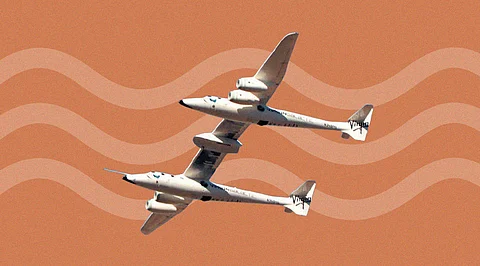

Forget the space missions and space tech innovations; the recent hot topic now is 'space tourism.' Ever since Jeff Bezos, the former CEO of Amazon and the owner of Blue Origin announced his upcoming journey to outer space, the space tech industry took an ideology twist. Since he had a couple of vacant seals along his side, the debate on who is going to fill it and how much will it cost was the talk of the town. On the other end of the US, Virgin Galactic, another space tech company had vivid plans. Without much decoration, the company's founder Richard Branson went to outer space on one of its space flights, SpaceShipTwo VSS Unity. Although the distance and the time are widely seen as a bare minimum, the mission marks a milestone in the space tourism industry. As space tech companies come up with disruptive flights, more space tourism is underway.
Through the successful space tourism mission, Richard Branson became the first person to ride into space aboard a rocket he helped fund. The ultramodern spaceplane developed by his company took off over New Mexico, carrying Branson and three other crewmembers. SpaceShipTwo, the historic space flight, was designed by Virgin Galactic. The company has spent over two decades developing the ironic flight before it could crack into space. The space flight got detached from its mothership and dropped lifeless for a while before its own engine roared to power. Inside the spaceship, the crew members experienced a temporary moment in space, watching the curves of Earth and enjoying the non-gravitational stance. SpaceShipTwo stood almost 50 miles above the Earth's gravitational force and returned in good shape. The landing was also iconic. The space flight deployed its feather system, which curled the plane's wings upwards just like a badminton shuttlecock. The spaceship flew back into the Earth's atmosphere and glided down to a runway landing.
As the successful space mission comes just days before the much allured Blue Origin's commercial space flight, it is believed that more space tourism is underway. In a couple of decades or so, traveling 100 miles upward will be the best tourism option for the generations to come.
Virgin Galactic, announced that the company will start commercial space tourism in 2022 after successfully testing a couple more space planes. While space tourism is anticipated to grow drastically over the next few years, the price of the tickets is something we need to talk about. Already, over 600 wealthy would-be citizen astronauts have booked reservations, priced at about US$250,000 per ticket to experience their time in space. However, Virgin Galactic aims to lower the price to US$40,000 per seat as the company is planning to ramp up its services in space tourism.
On the other hand, Blue Origin, another company that is pumping up its space race hasn't started selling seats on New Shepard. Although it is yet to release its ticket prices, the upcoming space flight's ticket was sold at US$28 million in an auction in June. But these higher prices don't scare away enthusiasts. Many believe that just like how normal flight seat prices came down to serve commoners, the space tourism industry will also evolve to take laymen to space at a lower cost.
The buzz on private forays in space tech is not new. Ever since governments across the globe allowed private companies to work in the space industry, the growth has been unconditional. Besides the innovation and mission to discover outer space, commercial conglomerates are working heavily on the revenue-making part. One such thing is space tourism. The space tourism concept dates back to 2000 when many millionaires spent an unconditional amount of money to fly into International Space Station. NASA also slowly encouraged them to upgrade their missions with cargo and astronauts to the ISS. Commercial cargo flights for NASA began in 2012, and commercial crew flights began in 2020.
Fortunately, space tech companies like SpaceX, Blue Origin, and Virgin Galactic have been working to make human's dream of 'space tourism' come true. While the internationally recognized boundary of space, the Karman line, is generally considered to be 62 miles in altitude, the US uses 50 miles as the cutoff point. Virgin Galactic's flight SpaceShipTwo went up and touched 53.5 miles. Blue Origin didn't take the occasion lightly. The company took to Twitter to criticize how 53.5 miles is not actually the outer space mark. Blue Origin's first space tourism flight is expected to go about 65 miles high.
Although nether Virgin Galactic, not Blue Origin is expected to offer affordable tickers to average passengers, the space tourism that is underway will normalize the concept. But we can't argue that the tickets are far beyond laymen's reach. It almost takes a fortune and years of human efforts to build a spacecraft for tourism.
Join our WhatsApp Channel to get the latest news, exclusives and videos on WhatsApp
_____________
Disclaimer: Analytics Insight does not provide financial advice or guidance. Also note that the cryptocurrencies mentioned/listed on the website could potentially be scams, i.e. designed to induce you to invest financial resources that may be lost forever and not be recoverable once investments are made. You are responsible for conducting your own research (DYOR) before making any investments. Read more here.
